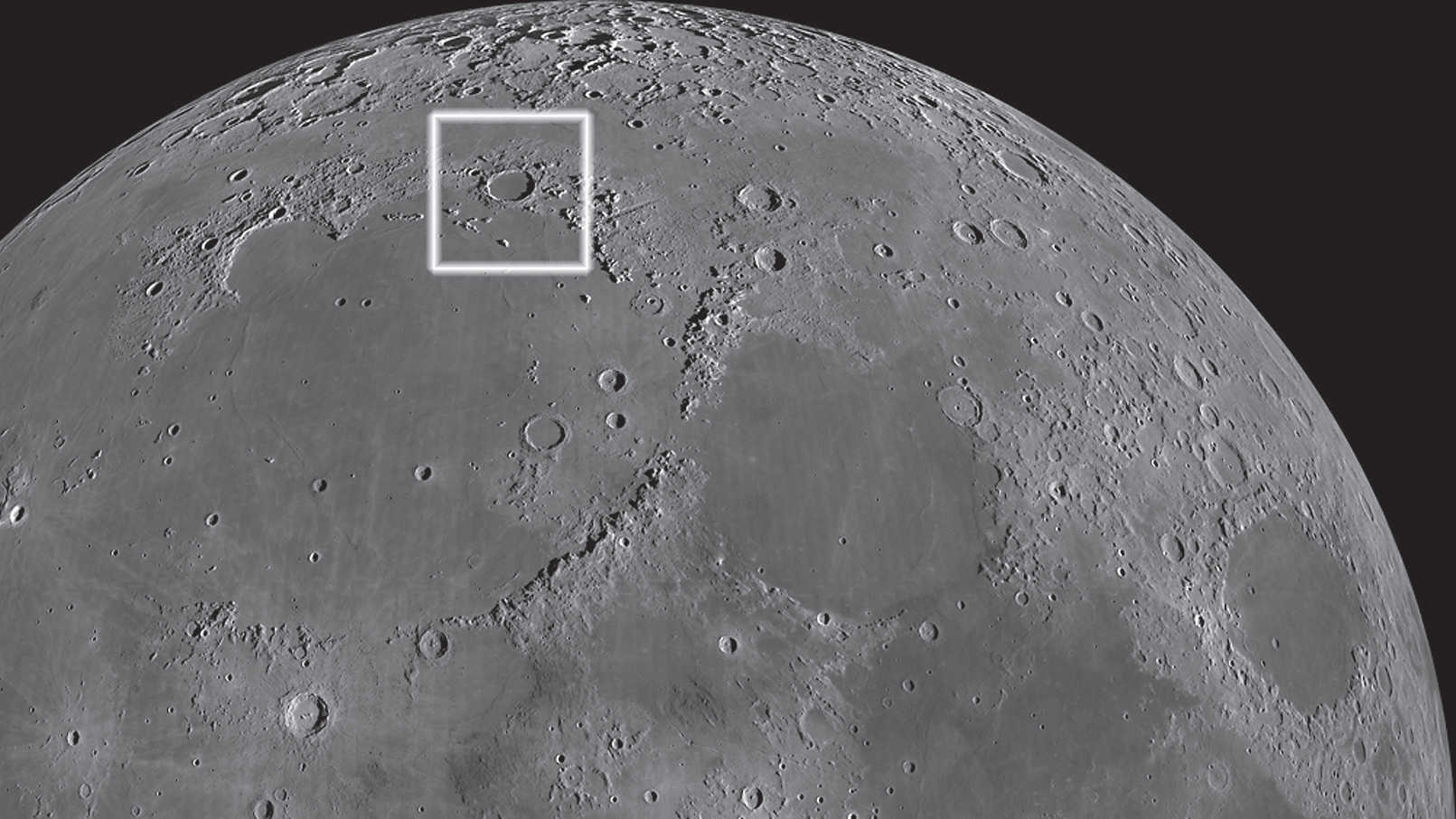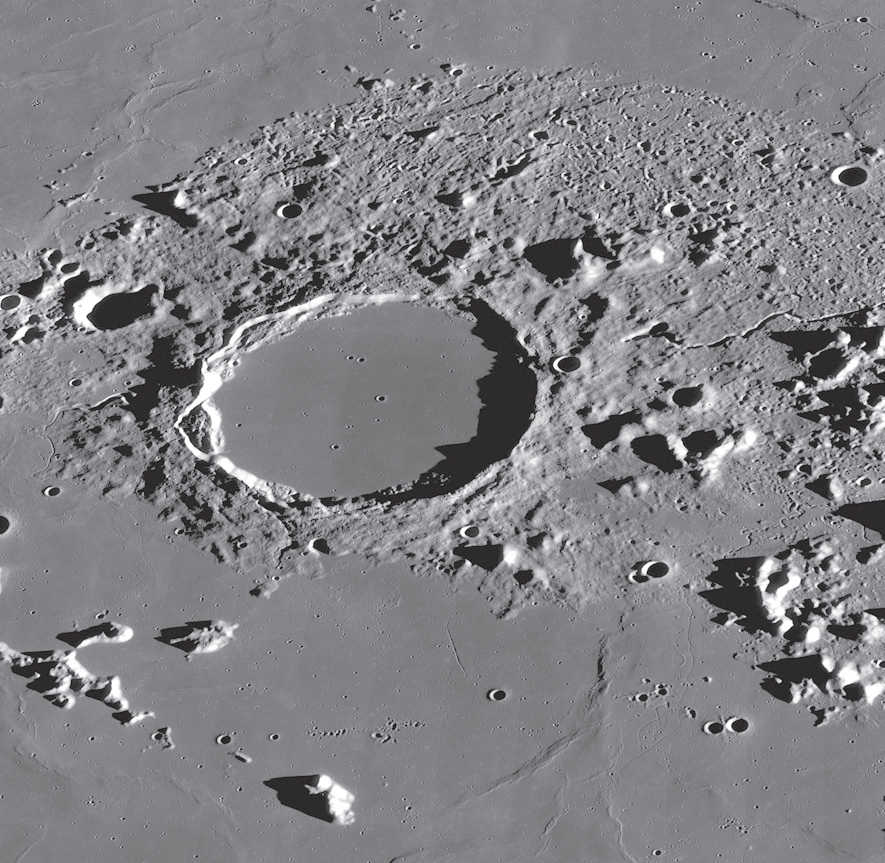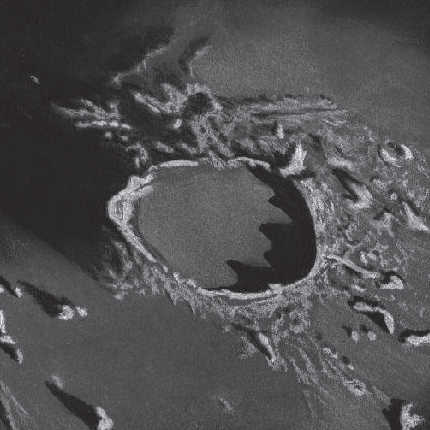Classic at the Sea of Showers
Plato, the dark impact crater, lies at the northern edge of Mare Imbrium, and is a lunar observation classic.
 Plato, the dark impact crater, lies at the northern edge of Mare Imbrium. NASA/GSFC/Arizona State University
Plato, the dark impact crater, lies at the northern edge of Mare Imbrium. NASA/GSFC/Arizona State UniversityPlato, the large impact crater, is a lunar observation classic and the visual centrepoint at the northern edge of Mare Imbrium (Sea of Showers). This dark, round landmark is located on a narrow strip of light terrain between the Mare Frigoris (Sea of Cold) and Mare Imbrium, and is easy to identify - even with binoculars.
A lake in disguise
 Plato is impressive when viewed through a telescope of any size. NASA/GSFC/Arizona State University
Plato is impressive when viewed through a telescope of any size. NASA/GSFC/Arizona State UniversityPlato’s dark floor has a diameter of 100 km and an average depth of 1,000 m. Because of its appearance, this impact crater has also been referred to as Lacus (lake). Early lunar observers such as Langrenus and Hevelius named the formation Lacus Panciroli and Lacus Niger Maior (Great Dark Lake), respectively. Plato was finally christened in 1651 by the Italian astronomer Riccioli, and named after the Greek philosopher.
Patterns of light and shadow at sunrise
 Sketch: as the Sun rises, the crater’s peaks cast long shadows across Plato’s floor. Frank McCabe
Sketch: as the Sun rises, the crater’s peaks cast long shadows across Plato’s floor. Frank McCabeAt the eastern wall of the impact crater, three individual peaks of 1,500 m, 1,800 m and 2,100 m rise above the crater floor. At sunrise, these peaks cast long, intriguing shadows across Plato’s plain. Over a period of a few hours, as the Sun rises, you can observe the shadows shorten and eventually disappear.
Another nice detail is a triangular-shaped landslide around 15 km wide on the western wall. To the north of it and on the north edge further, less conspicuous, landslides can also be seen.
Plato's rilles
To the east of Plato there is another system of two smaller rilles called Rimae Plato. The northernmost of the two rilles is clearly visible through a medium-aperture telescope, the smaller one to the south is difficult to detect in the rough terrain. Due to their winding shape, similar to a terrestrial river, it is assumed that these rilles were created by ancient lava flows. The largest crater nearest to Plato is Bliss which has a diameter of 20 km. It was not until the year 2000 that the crater was given its current name. The International Astronomical Union named the crater, previously known only as Plato A, after the English astronomer Nathaniel Bliss.
Best visibility 8 or 21 days after New Moon
Author: Lambert Spix / Licence: Oculum-Verlag GmbH
